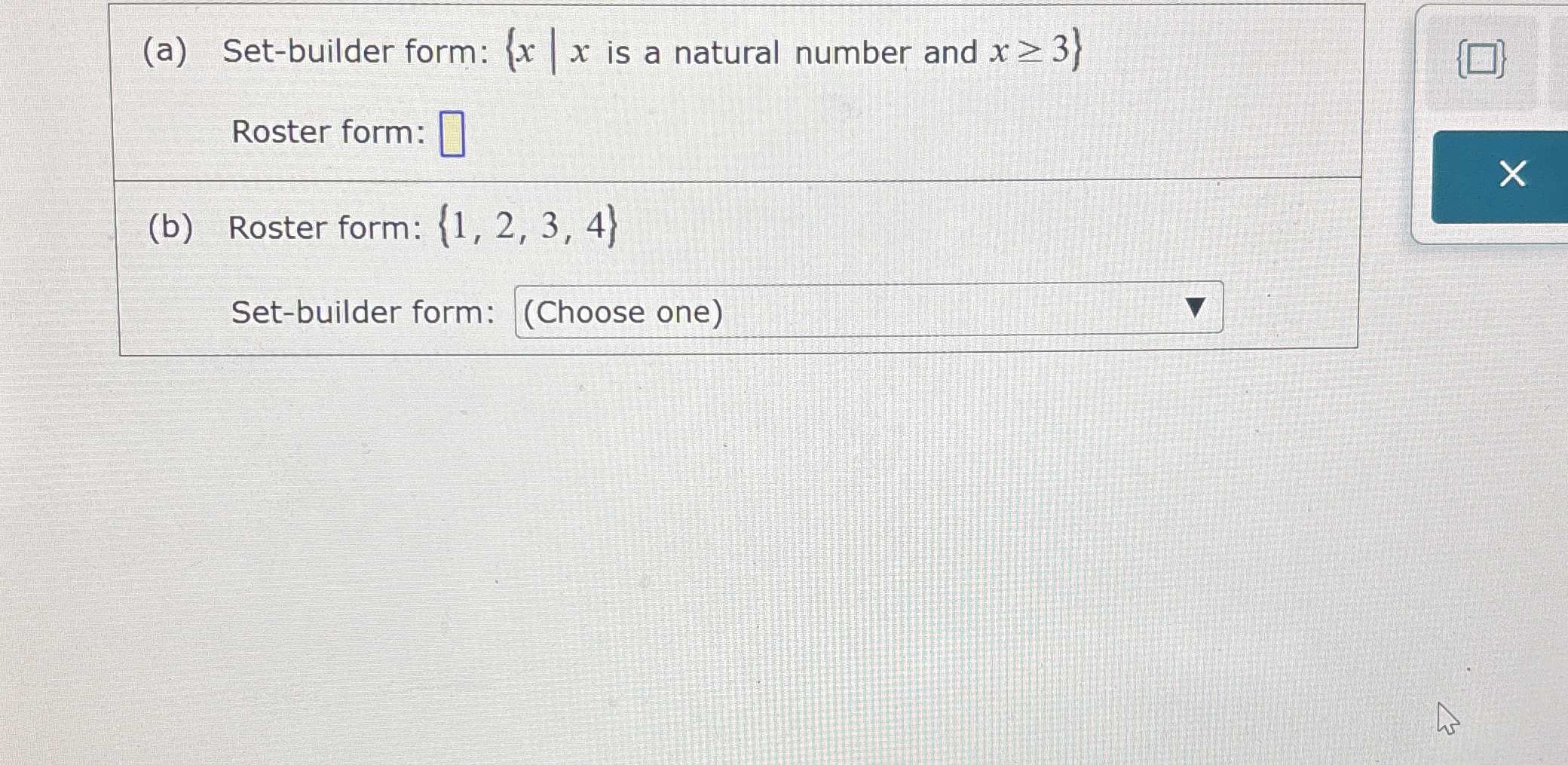a) Convert the set {x | x is a natural number and x ≥ 3} to roster form. b) Convert the set {1, 2, 3, 4} to set-builder form.

Understand the Problem
The question asks to convert between set-builder notation and roster notation. Part (a) asks us to find the roster form for the set of natural numbers greater than or equal to 3. Part (b) requires finding the set-builder form for the set containing the numbers 1, 2, 3, and 4.
Answer
(a) $\{3, 4, 5, 6, ... \}$ (b) $\{x \mid x \text{ is a natural number and } 1 \leq x \leq 4\}$
Answer for screen readers
(a) ${3, 4, 5, 6, ... }$ (b) ${x \mid x \text{ is a natural number and } 1 \leq x \leq 4}$
Steps to Solve
- Convert set-builder notation to roster notation
The set-builder notation ${x \mid x \text{ is a natural number and } x \geq 3}$ describes the set of all $x$ such that $x$ is a natural number and $x$ is greater than or equal to 3. The natural numbers are the positive integers (1, 2, 3, ...). Thus, the set includes 3 and all natural numbers greater than 3.
- Write the roster notation
The roster notation lists all elements of the set. In this case, it is ${3, 4, 5, 6, ... }$. The ellipsis (...) indicates that the pattern continues indefinitely.
- Convert roster notation to set-builder notation
The roster notation ${1, 2, 3, 4}$ represents a set containing the numbers 1, 2, 3, and 4. We need to describe this set using set-builder notation. One way to do this is to say that $x$ is a natural number and $x$ is between 1 and 4, inclusive.
- Write the set-builder notation
Therefore, the set-builder notation can be written as ${x \mid x \text{ is a natural number and } 1 \leq x \leq 4}$.
(a) ${3, 4, 5, 6, ... }$ (b) ${x \mid x \text{ is a natural number and } 1 \leq x \leq 4}$
More Information
Set-builder notation provides a rule or condition that determines whether an element belongs to the set. Roster notation explicitly lists the elements of a set within curly braces.
Tips
- Forgetting the ellipsis (...) when a set continues indefinitely in roster notation.
- Incorrectly interpreting the inequality sign (e.g., using $>$ instead of $\geq$).
- Not understanding the definition of natural numbers (positive integers).
AI-generated content may contain errors. Please verify critical information